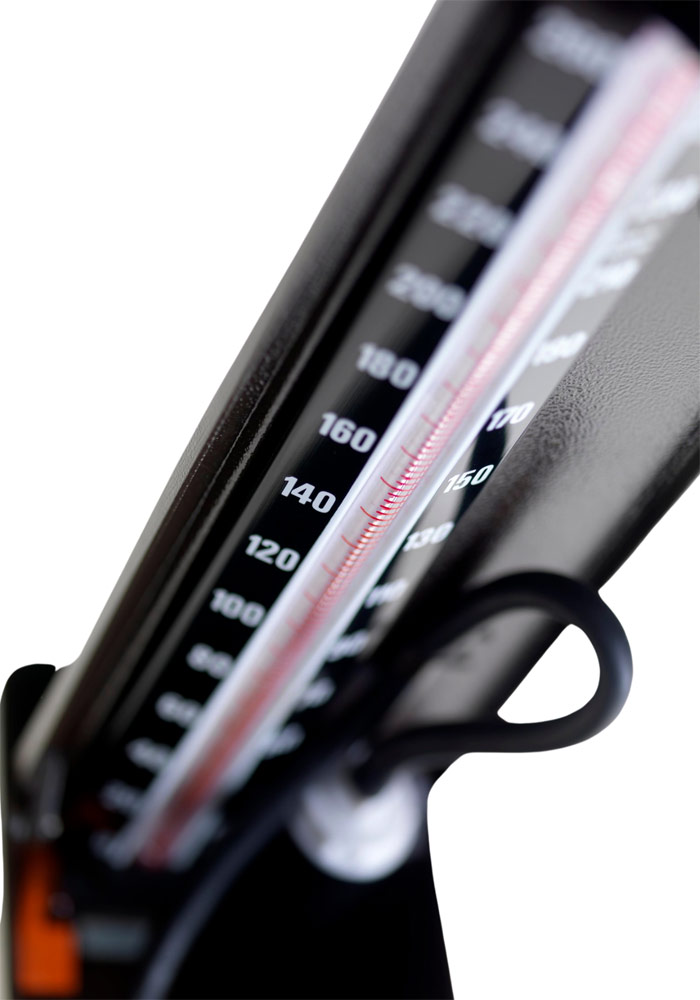ARTERIAL HYPERTENSION

ARTERIAL HYPERTENSION
Hearτ acts as a pump with a role to collect the deoxygenated blood and forward it to the lungs in order to become enriched in oxygen. Subsequently, heart forwards the oxygenated blood to the systematic (arterial) circulation. However, arteries do not act as mere conduits through which there is a blood flow. They are, indeed, dynamically regulated so that a constant pressure is maintained up to the most distal arterial branches. Arterial (or blood) pressure is the pressure that blood flow puts on the wall of the arteries (normal levels for healthy adults up to 120/80 mmHg).
The higher the levels of blood pressure the higher the workload is required by the heartin order to maintain a flow adequate for the needs of a person. Further, high blood pressure accelerates vessels’ aging, i.e. distorts their elastic properties; this process is called atherosclerosis or arteriosclerosis. A mechanical analogue of the detrimental effect of high blood pressure levels in the vessels is the excess wear that car tyres will suffer from if driven constantly over a dirt road as compared with utilization in a paved national way.
Temporary high blood pressure levels, within certain limits, are expected as a normal response under a series of stimuli like physical exertion or stress. Conversely,high blood pressure levels (>140/90mmHg) for prolonged periods are related to a higher probabilty of serious adverse evenets (e.g. myocardial infarction, stroke, renal failue) and death. This condition is known as arterial hypertension which is estimated to be one of the major causes of mortalityin the western world. Hopefully, nowdays it is feasible to timely diagnose this condition. Indeed, following proper lifestyle modifications with or without medications we may succeed in maintaining normal blood pressure levels.
Arterial Hypertension diagnosis is established either after measurement of blood pressure in a clinic by a physician (two separate sessions are required), or after one instance of very high blood pressure level, or after prolonged measurement (24h abmulatory blood pressure measurement or self-measurement for a series of days and registation in a “patient diary”). On the contrary to a common belief among non-physicians, hypertenstion is not related to specific symptoms (e.g. headache or flushing) with the exception of cases where end-organ damage is present (e.g. acute pulmonary edema, hypertensive encephalopathy). This is the cause for hypertension being characterized as a silent killer.
The first step in order to tackle abnormal blood pressure levels are lifestyle modifications: stop smoking, dietary improvements – limitation of salt content (<5 gr/day), weight loss, physical exercsise (preferably aerobic exercise of moderate intensity for 30 minutes per day for at least 5 days per week), limitation of alchohol intake. Should these measures not result in normalization of blood pressure levels within 3-6 months, then proper chronic anti-hypertensive medication should be introduced. In persons whose estimated risk for adverse events is elevated or blood pressure levels are very high, then pharmaceutical treatment should be introduced simultaneously with lifestyle modifications.
It is of significance that a person suffering from arterial hypertension understands that hypertension management is more like a marathon rather than a sprint.Adherence both to lifestyle modifications and medication in the long-term is of great importance.Lifelong administration of antihypertensive medications is often required and protects cardiovasuclar vasculature. Instant high blood pressure levels may well be measured and should not provoke anxiety. Still, this need for long-term therapy should not lead to inertia.
